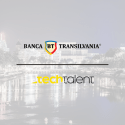Technological advancements have driven the Internet of Things (IoT) and artificial intelligence (AI) to the forefront of innovation, marking a significant era of growth and integration between the two domains. IoT brings to life a network of interconnected devices equipped with sensors, software, and technology to facilitate data exchange across the digital ecosystem, thereby reshaping our interaction with the tangible world. Meanwhile, AI stands as a testament to the capability of machines to mimic human intellect, revolutionizing the way data is processed and analysed.
The intersection of artificial intelligence and Internet of Things technologies not only enriches the functional capacities of IoT systems but also ushers in advancements that lead to smarter, more efficient, and fully autonomous operations. So, allow us to explore the many ways in which the convergence of AI and IoT is setting the stage for transformative changes across various industries, paving the way for a future where intelligent systems seamlessly integrate into every facet of our daily lives, enhancing efficiency, sustainability, and overall quality of life.
Enhanced Data Processing and Analysis
One of the most remarkable contributions of AI to IoT lies in its profound ability to process and analyse vast volumes of data generated by IoT devices. Through the application of artificial intelligence algorithms, these systems gain the remarkable capability to swiftly sift through extensive datasets, recognizing intricate patterns and making predictions that have far-reaching implications for real-time decision-making across a myriad of sectors. This integration enables an array of applications, ranging from the optimization of traffic in smart cities to the implementation of predictive maintenance practices in manufacturing and the precision-driven advancements in agriculture. By effectively converting complex datasets into actionable insights, artificial intelligence not only elevates IoT from being a mere data collection tool, but transforms it into a critical instrument for enhancing operational efficiency and propelling innovation across diverse industries.
Predictive Maintenance
Predictive maintenance, empowered by the seamless fusion of AI with IoT frameworks, emerges as a game-changer in the industrial sector. This approach revolutionizes operational efficiency by providing the capability to forecast equipment failures before they manifest. Leveraging extensive data from machinery, AI algorithms enable preemptive maintenance actions, thereby significantly reducing downtime and the associated financial burdens. This proactive stance not only minimizes repair costs and mitigates productivity losses but also contributes to the extension of equipment lifespan. The insights derived from AI analysis enhance maintenance schedules and overall operations, fostering a more reliable and sustainable approach to asset management. This vividly underscores the crucial role of artificial intelligence in amplifying Internet of Things capabilities, thereby fostering intelligent and cost-effective industrial practices.
Enhanced Security
The integration of AI into IoT systems represents a significant advancement in strengthening security measures within connected environments. This transformative shift is driven by the deployment of sophisticated artificial intelligence algorithms that carefully monitor data traffic, continually scanning for anomalies that could signal potential security breaches. What sets this approach apart is its proactive nature, significantly reducing vulnerability to cyberattacks and enhancing the defences of sensitive information. AI's unique strength lies in its ability to learn from previous incidents and continuously adapt to combat emerging threats. Through real-time analysis of data traffic patterns and the swift detection of irregularities, artificial intelligence serves as a vigilant guardian, protecting IoT networks against a wide range of vulnerabilities, both known and unforeseen. This transformative security paradigm ensures that critical data and infrastructure within interconnected environments remain protected by an ever-evolving, intelligent security layer, positioning artificial intelligence as an invaluable ally in the ongoing battle against cyber threats.
Improved User Experience
AI's remarkable impact on the user experience in Internet of Things applications is evident, primarily through personalization and automation. Artificial intelligence's unique capability to understand and adapt to user behaviour empowers IoT devices to seamlessly cater to individual preferences. Consider smart homes, where AI becomes finely attuned to the homeowner's habits and preferences, autonomously adjusting settings like lighting, temperature, and music without direct user input. This transformative process goes beyond traditional technology interfaces, making Internet of Things-powered devices not only more efficient but deeply aligned with individual needs and preferences. The integration of artificial intelligence with IoT revolutionizes how users interact with technology, enhancing daily interactions and creating a harmonious relationship between humans and the digital world, where technology serves as an intuitive and responsive companion, elevating the quality of life.
Enabling Autonomous Systems
Perhaps one of the most exciting aspects of integrating AI with IoT is the enablement of autonomous systems. This fusion of artificial intelligence and Internet of Things technologies brings to life a new era where machines possess the remarkable ability to operate independently, adapting and responding to their environment in ways previously deemed unattainable. In the domains of autonomous vehicles and drones, AI algorithms process data from IoT sensors to make real-time decisions without human intervention, ushering in not only increased efficiency but also a host of unprecedented applications where human involvement is impractical or impossible. This ground-breaking development represents a paradigm shift, marking the dawn of a future defined by automation and intelligence, offering a glimpse into the limitless potential of autonomous systems across a myriad of industries and contexts.
Facilitating Sustainable Solutions
Another critical area where the combination of artificial intelligence and the Internet of Things is making a profound impact is in promoting sustainability and environmental conservation. This synergy is instrumental in developing solutions that not only advance technological capabilities but also address some of the most pressing environmental challenges.
Energy Efficiency
AI algorithms significantly boost energy efficiency by analysing IoT sensor data to smartly manage energy use in buildings, industrial operations, and urban systems. By optimizing energy consumption, such as fine-tuning HVAC systems in real time and improving industrial processes, artificial intelligence helps balance energy demand with supply, favouring renewable sources and minimizing waste. This approach not only cuts carbon emissions but also reduces energy costs, demonstrating AI's role in promoting sustainability and efficiency across various sectors. Through intelligent and adaptive energy management, artificial intelligence paves the way for a more sustainable, cost-effective, and environmentally friendly future, showcasing its critical role in enhancing global energy practices.
Resource Management
In natural resource management, artificial intelligence-enhanced IoT devices revolutionize how agricultural resources are optimized. By monitoring environmental conditions such as soil moisture, air quality, and water levels, these devices facilitate precision farming. This approach ensures the judicious use of water, fertilizers, and other inputs, directly boosting productivity and sustainability. It also plays a crucial role in conserving water and reducing the environmental impact of farming practices. Through the precise application of resources based on real-time data, AI-driven Internet of Things technology not only enhances agricultural efficiency but also supports the conservation of natural resources, highlighting its importance in promoting sustainable farming methods.
Pollution Monitoring and Control
AI-powered IoT networks are revolutionizing the way we monitor and control pollution by analysing data from environmental sensors, detecting pollutants, and identifying their sources in real time. This technology enables targeted actions, such as optimizing traffic flow in cities to minimize emissions when air quality drops. By offering precise insights into pollution levels and trends, these networks aid in developing effective environmental policies and preemptive measures. The use of artificial intelligence in pollution management also supports the creation of cleaner, healthier urban environments through data-driven decisions, showcasing the potential of technology in advancing environmental protection efforts.
Enhancing Disaster Response
Integrating artificial intelligence with Internet of Things technologies is reshaping disaster response efforts by delivering precise and swift information that is vital for minimizing damage and saving lives during natural disasters. By deploying Internet of Things devices across vulnerable areas, these systems can detect early signs of impending disasters such as earthquakes, tsunamis, or forest fires. AI algorithms then sift through the data to predict potential impacts, allowing for the optimization of emergency response strategies and more efficient allocation of resources. This method not only boosts the effectiveness of disaster response operations but also plays a crucial role in lessening their environmental and social fallout. The combination of artificial intelligence's predictive power with Internet of Thing's extensive monitoring capabilities ensures that emergency services can act swiftly and accurately, significantly enhancing the ability to protect communities.
Conclusion
The fusion of artificial intelligence with the Internet of Things marks a significant shift in how data is processed and utilized across various domains, leading to transformative advancements from industrial predictive maintenance to optimizing traffic in smart cities and supporting environmental conservation efforts. This integration enables AI-driven IoT systems to deliver real-time insights, enhance operational efficiency, and foster sustainability. As AI technology advances and the deployment of IoT devices becomes more widespread, the potential for meaningful impact across different industries and aspects of society becomes increasingly clear. This collaboration between intelligence and connectivity is paving the way towards a future where intelligent systems seamlessly become a part of our daily routines, elevating efficiency, sustainability, and life quality. The progression of artificial intelligence and Internet of Things integration signifies more than technological innovation, it is a step forward towards a smarter, more connected, and environmentally conscious world.



